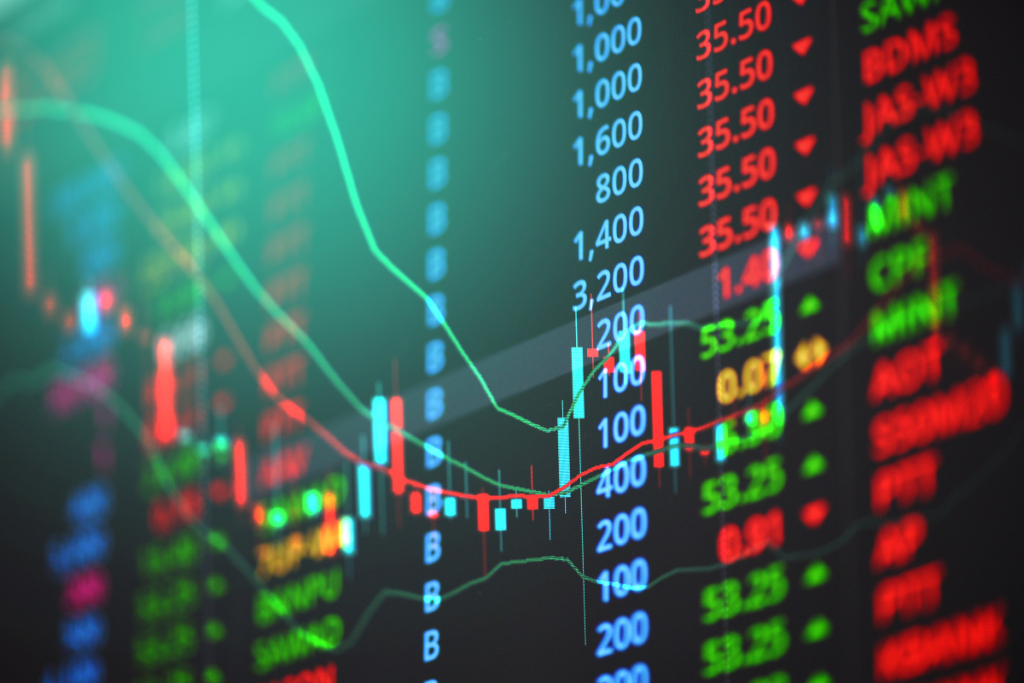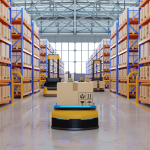President Trump’s sweeping tariff hikes have redefined the U.S.-China trade relationship, turning what was once a manageable risk into a direct operational and financial threat for American multinationals. As China fires back with steep retaliatory duties, the once-muted debate over single-country dependencies has taken center stage for businesses worldwide.
From Apple to Ford, here’s a look at the firms most exposed to tariffs, and how they’re responding to secure their supply lines.
Navigating Tariffs: The Top 10 Most Exposed Companies
Here are the top 10 global companies most exposed to these tariffs:
1. Ford Motor Co.
Ford has been flagged as the most exposed among U.S. multinationals. It maintains extensive operations in China, including joint ventures with Changan and Jiangling Motors, which collectively produced over 600,000 vehicles in 2024 alone. The automaker’s regional issues extend to scrutiny over forced labor and human rights practices in Xinjiang, underscoring the political and reputational risks intertwined with its Chinese manufacturing footprint.
Ford is employing various tactics to reduce tariff-related costs, including rerouting vehicles through Canada using bond carriers to avoid certain tariffs. The company is advancing its investment in domestic manufacturing, exemplified by the development of BlueOval City in Tennessee—a $5.6 billion facility dedicated to electric vehicle production, expected to employ approximately 5,800 workers upon completion.
2. Carrier Global Corp.
Carrier’s commanding position in China’s HVAC market is built on 11 manufacturing sites and 5 R&D centers, an operational depth that makes it highly sensitive to tariffs. Carrier’s China operations generated nearly $2 billion in annual revenue, according to 2024 filings, making the country a critical growth market that is now increasingly precarious.
To hedge against tariffs, Carrier has launched a multi-phase diversification project. Initial moves include evaluating joint-venture expansions in India and Indonesia while simultaneously working with third-party logistics providers to reroute key product lines. Internally, Carrier’s procurement teams are tasked with identifying alternative regional suppliers, prioritizing flexibility and rapid scalability as cornerstones of future sourcing decisions.
3. Apple Inc.
Wedbush data confirms that 90% of iPhones, 70–80% of iPads, and 50% of Mac computers are assembled in China. Apple’s pivot to India and Vietnam remains in its infancy—Foxconn’s India output still covers only 5–7% of total iPhone production. In the wake of the tariffs, Apple lost over $300 billion in market capitalization in a single day, illustrating the financial gravity of this exposure.
Apple has responded by accelerating its diversification strategy. It has doubled down on capacity-building in India and Vietnam, forging new supply agreements and providing incentives for partners to ramp up local production. While Apple has not publicly detailed its pricing strategy in response to tariffs, analysts suggest the company may absorb some additional costs to maintain competitive pricing, especially for its flagship products.
4. Tesla Inc.
Tesla’s dependence on Chinese lithium-ion battery cells for its energy storage products (Powerwall and Megapack) is acute. Analysts estimate tariffs could double the production costs of these products, a blow for a company already grappling with price wars in China’s EV sector. In 2024, Tesla’s energy division alone accounted for $6 billion in revenue, much of it tied to these Chinese components.
To contain these cost shocks, Tesla has announced investments in new battery cell production facilities in Nevada and Austin, while also forging partnerships with South Korean firms to source some critical materials outside of China. In response to declining sales in Europe, the company has introduced financial incentives in countries like Sweden, Germany, Britain, and France to stimulate demand. For instance, in Norway, the company is offering interest-free loans for the new Model Y.
5. Coca-Cola Co.
Coca-Cola sources key ingredients like sucralose, a sweetener primarily imported from Chinese and U.S. suppliers, leaving it exposed to tariff-driven input cost hikes. In its 2024 annual report, Coca-Cola warned that higher ingredient costs could squeeze margins if it cannot fully pass on the increases to consumers. The company spends over $1.5 billion annually on sweetener and packaging inputs globally.
In response, Coca-Cola is actively re-negotiating contracts with Chinese suppliers to lock in more favorable pricing structures and reduce volatility. At the same time, it’s testing alternative sweeteners and packaging materials sourced from U.S. and Latin American suppliers, signaling a long-term play to hedge against tariff-driven input inflation.
6. Cummins Inc.
Cummins operates significant manufacturing and R&D facilities in China, focusing on clean energy and diesel engine technologies. The company’s 2024 report notes $4.2 billion in revenue from Chinese operations, a figure that puts it squarely in the tariff crossfire. Cummins also co-owns ventures like Dongfeng Cummins Engine Co., emphasizing the complexity of untangling these partnerships.
The company is taking a two-track approach: increasing component sourcing from India and Mexico while simultaneously deepening collaborations with local Chinese partners to maintain market presence. Cummins is also investing over $1 billion in its U.S. manufacturing operations, aiming to strengthen domestic production capabilities and reduce exposure to international trade uncertainties .
7. Nike Inc. (NKE)
Nike is significantly impacted by recent U.S. tariffs, particularly due to its reliance on manufacturing in Vietnam and China. Approximately 50% of Nike’s footwear and 26% of its apparel are produced in Vietnam . The imposition of a 46% tariff on Vietnamese imports has escalated production costs, compelling Nike to adjust its pricing strategy.
To mitigate the impact, Nike is expanding its global manufacturing footprint, with initial plans to re-establish select lines in South America and explore broader Southeast Asian supplier relationships. In parallel, Nike is leaning back into e-commerce partnerships, including Amazon, to balance tariff-driven cost increases with more efficient distribution channels.
8. Walmart
The imposition of a 10% universal tariff on all imports, along with a 30% tariff on Chinese goods, has led to increased costs for Walmart, which relies heavily on imported products. As a result, the company has raised prices on over 4,200 popular items, with some products experiencing price hikes of up to 45%.
To manage increased costs, Walmart has implemented selective price increases across various departments, particularly in home goods and toys. However, the company aims to minimize the impact on essential items to maintain its value proposition. The company is also exploring alternative sourcing options to reduce dependency on countries affected by tariffs. This includes seeking suppliers in regions with more favorable trade terms.
9. The Walt Disney Co.
Disney’s exposure stems not only from its consumer product lines, many of which are manufactured in China, but also from its theme park operations in Shanghai and Hong Kong. CEO Bob Iger has warned that tariffs will add to operational costs at a time when discretionary travel spending is already under pressure.
Disney is exploring ways to expand merchandise production in Vietnam and Thailand, while also evaluating licensing deals that would reduce direct exposure to Chinese manufacturing. For its theme parks, Disney is leaning into local partnerships to manage supply chain disruptions and maintain customer experience quality.
10. Caterpillar Inc.
Caterpillar’s exposure to China, historically its second-largest market, has been a growth engine for its construction and mining equipment. However, escalating tariffs have prompted Chinese customers to seek alternative suppliers, with local Chinese firms like Sany and XCMG aggressively courting Caterpillar’s market share. Caterpillar’s $4 billion annual revenue in China highlights the significance of this market for the company.
In response, Caterpillar is ramping up domestic production at U.S. facilities in Illinois and Texas, aiming to maintain cost competitiveness and preserve customer relationships amid shifting trade dynamics. The company is also exploring alternative Asian suppliers in Indonesia, Malaysia, and Thailand, working to forge stronger ties with regional players to lessen the risks of future tariffs.
Building Resilient, Multi-Node Supply Chains
Tariff volatility is forcing firms to recalibrate not only where they produce, but how they design supply networks and negotiate supplier relationships. The next step for executives is to move beyond incremental tweaks and embrace more fundamental changes – diversify supplier bases across multiple geographies, reassess critical inputs and their sourcing footprints, and stress-test every link of the supply chain for geopolitical friction. The ability to act now will determine not just profitability, but the future credibility and resilience of your entire operation.







